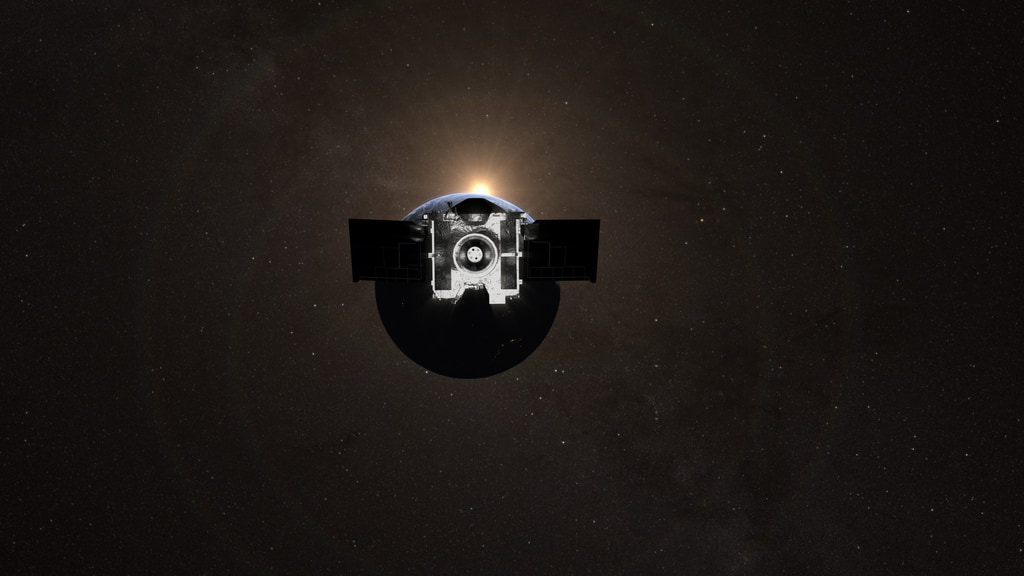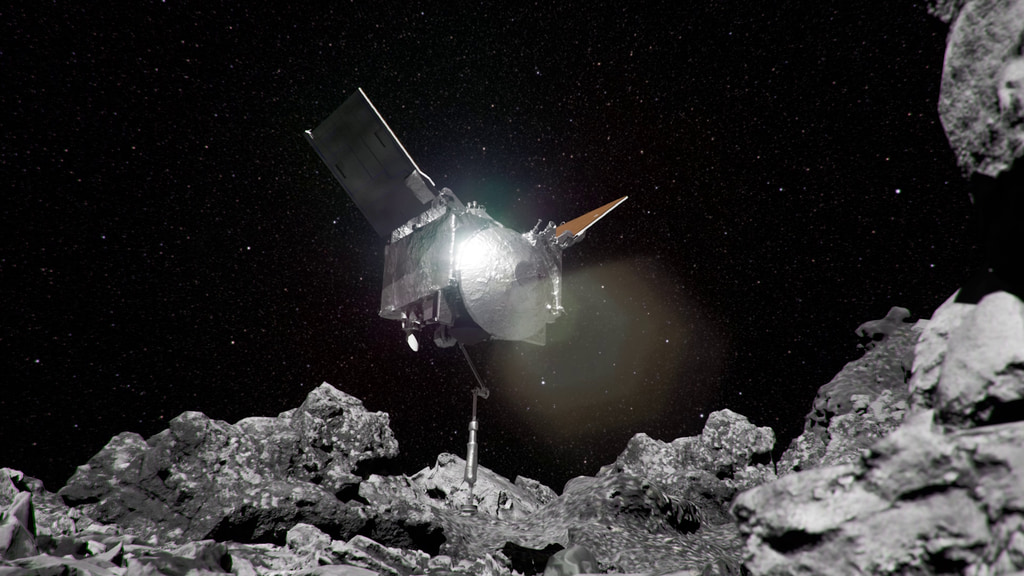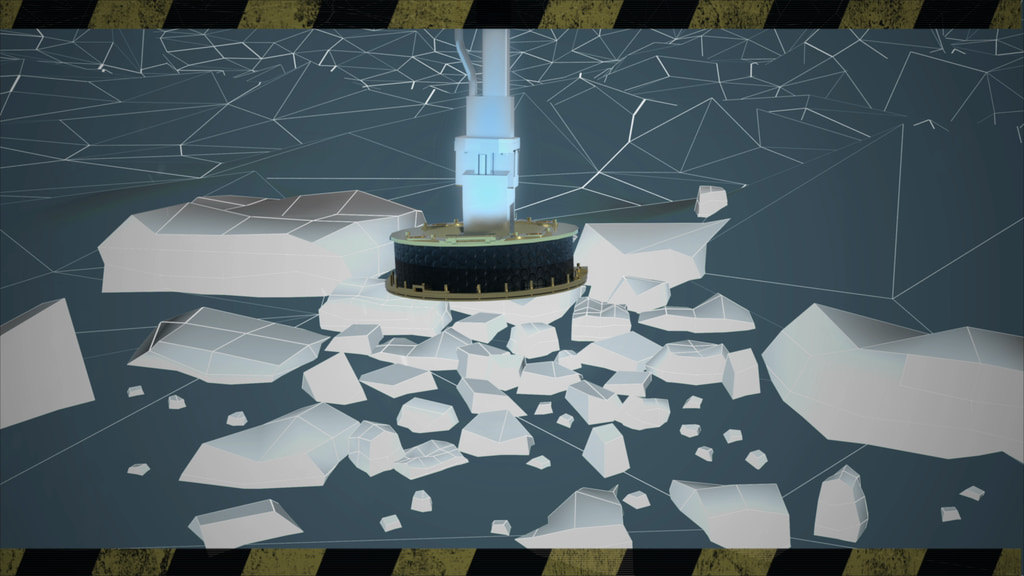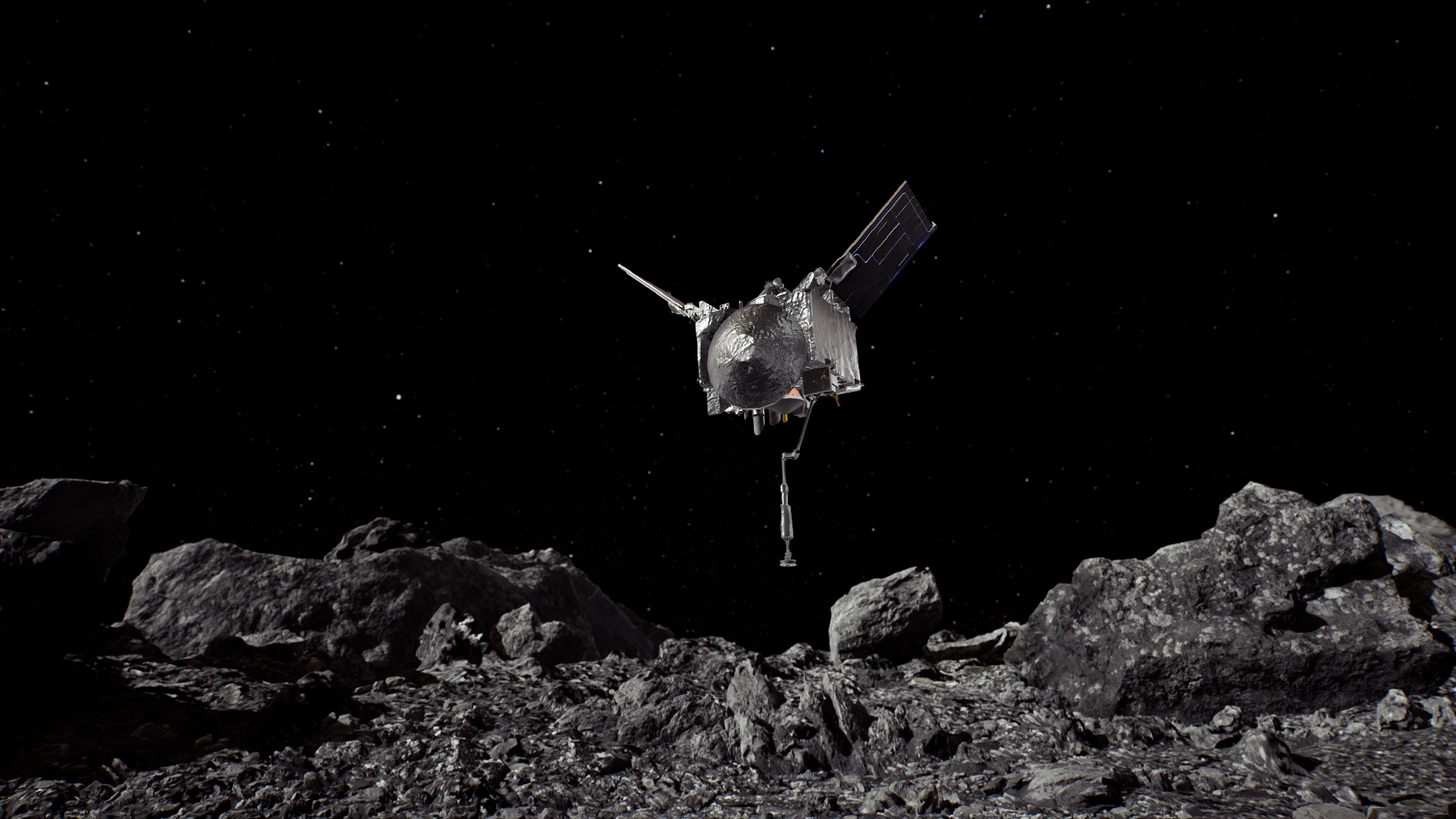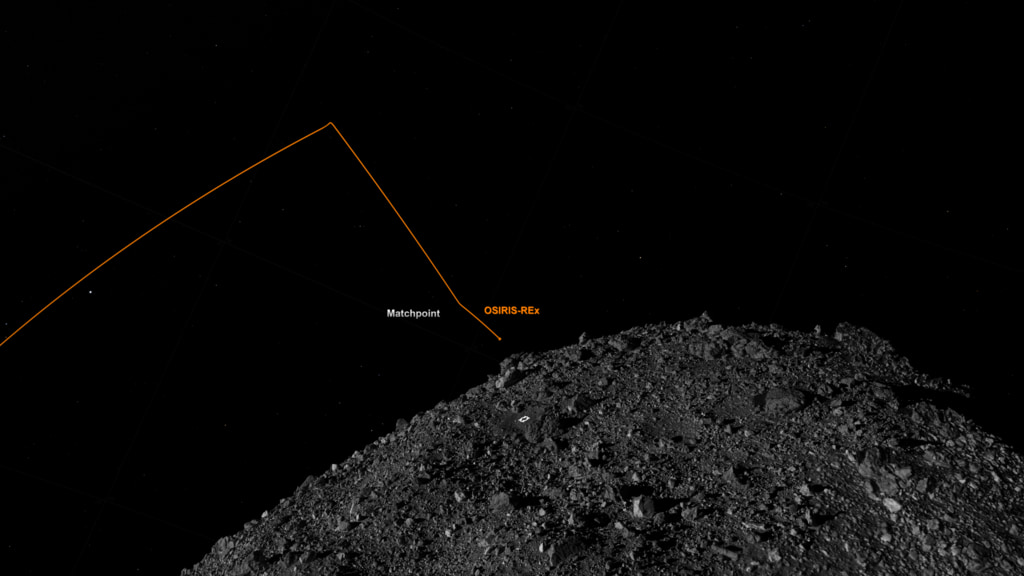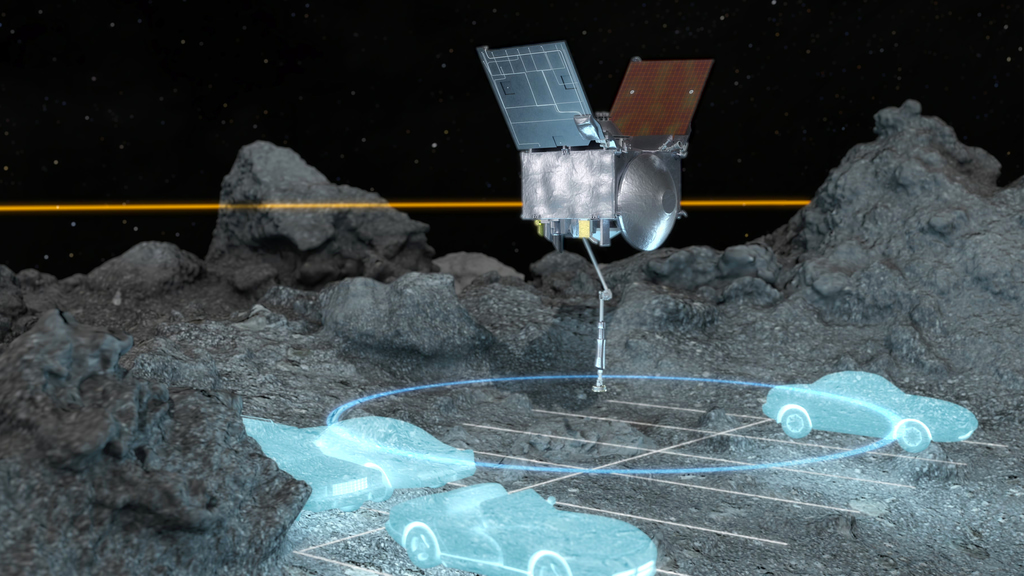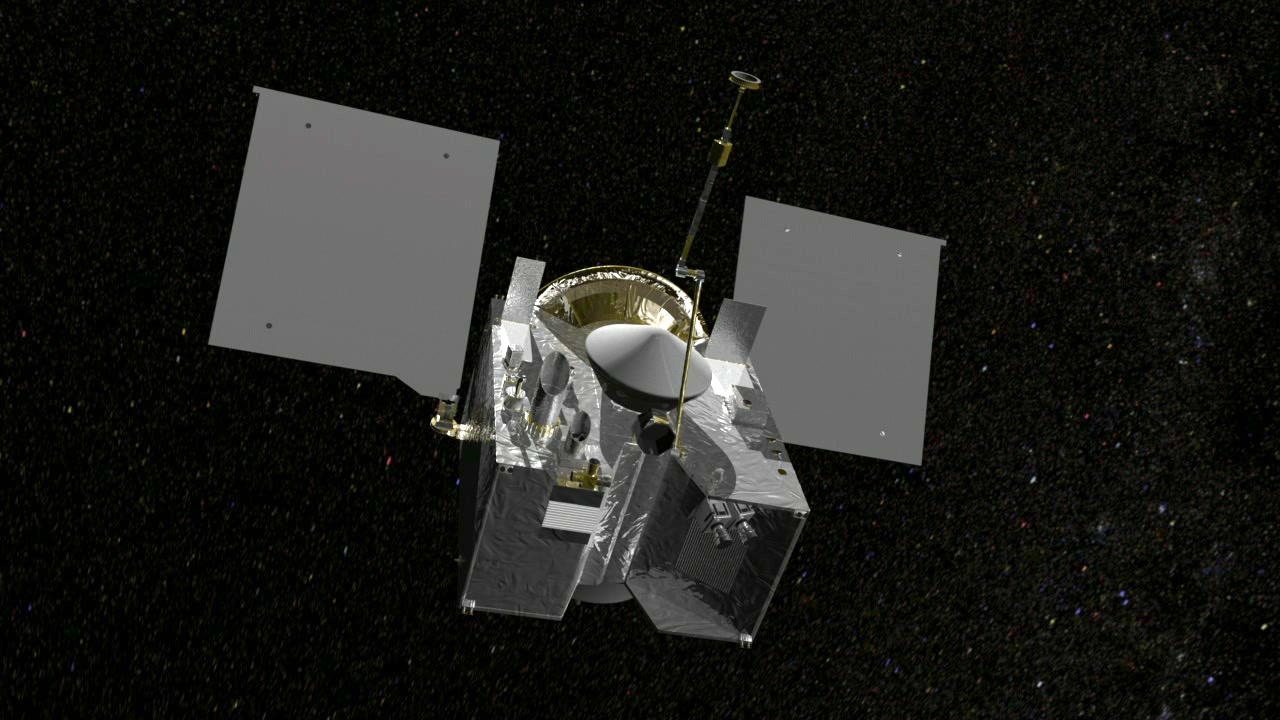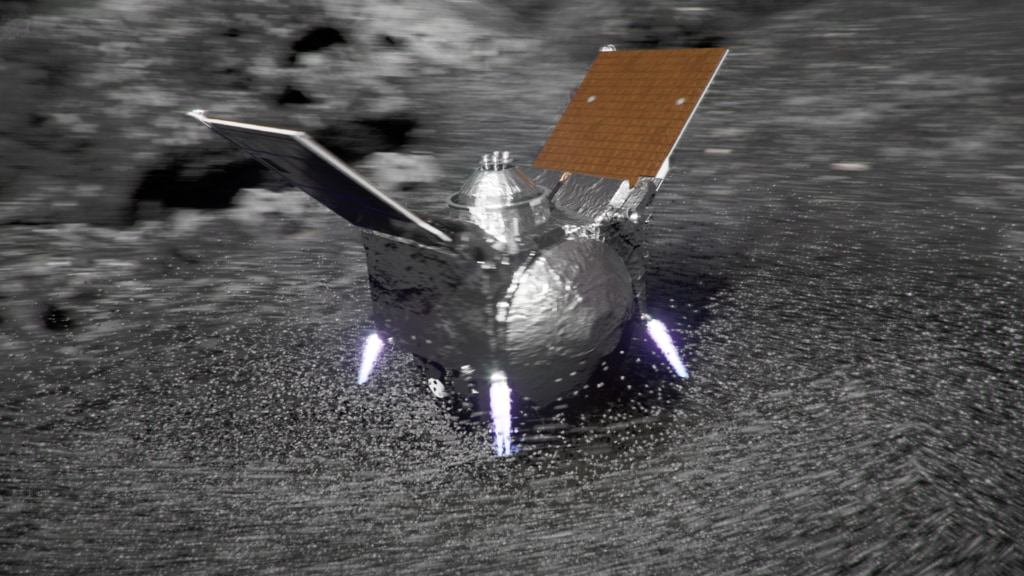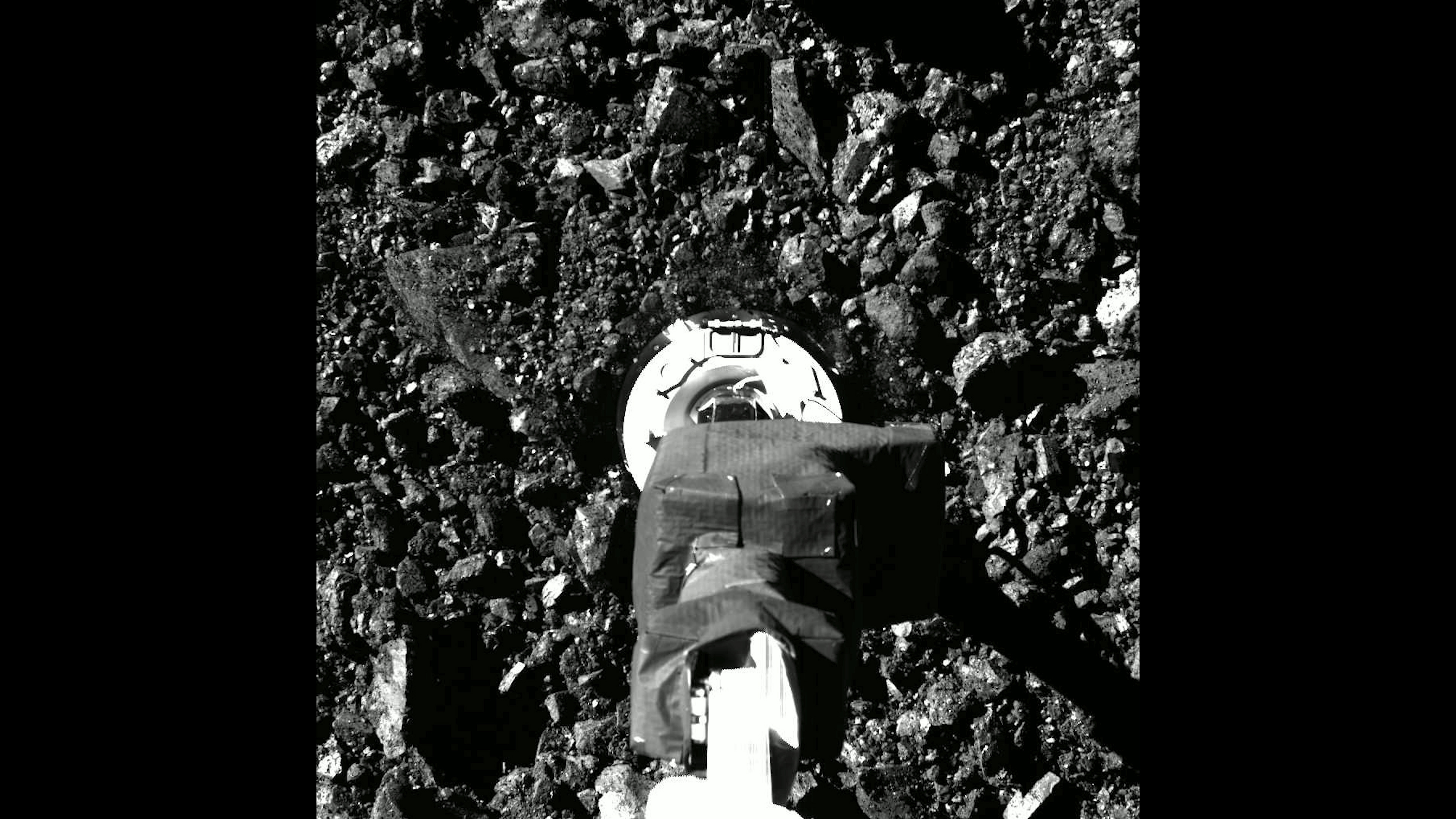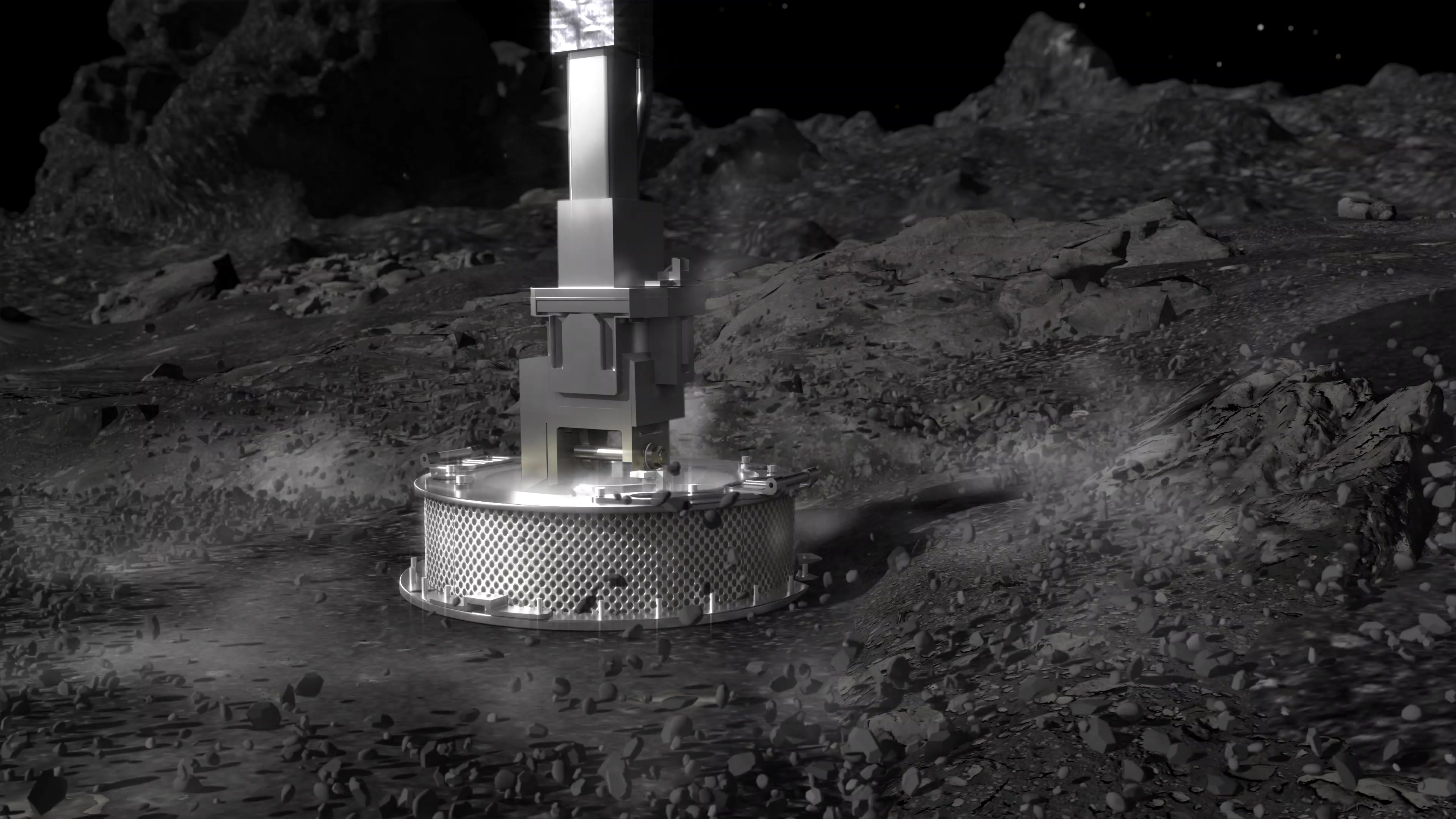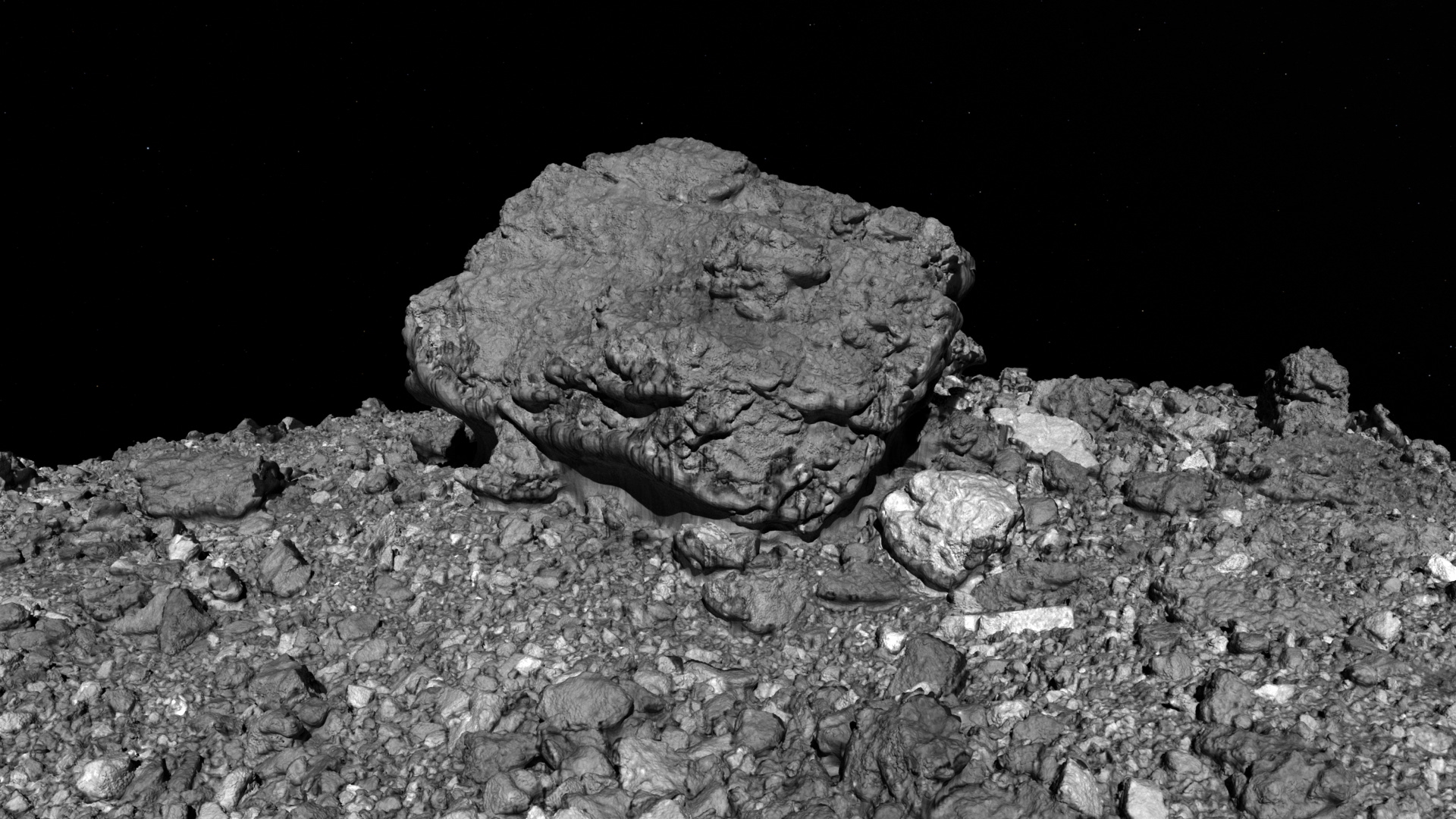OSIRIS-REx TAG Event: Animations
The Checkpoint burn sends OSIRIS-REx toward sample site Nightingale.
This media resource page provides animations of the OSIRIS-REx Touch-And-Go (TAG) event. OSIRIS-REx is NASA's first asteroid-sample return mission. Its goal is to study near-Earth asteroid Bennu and return a sample to Earth in 2023. The primary sample site for TAG is a small crater called Nightingale, which is surrounded by large boulders that could pose a hazard to the spacecraft.
All animations available in 4K Ultra HD resolution.
SamCam imaging sequence, from Checkpoint to Matchpoint, simulating one frame per minute.
The Matchpoint burn zeroes out OSIRIS-REx's horizontal velocity relative to site Nightingale, so that the spacecraft does not tip over during TAG.
SamCam imaging sequence, from Matchpoint to TAG, simulating one frame every 15 seconds.
OSIRIS-REx will use an onboard Hazard Map to autonomously determine whether it is safe to touch down on Bennu's rocky surface at the predicted point of contact.
After OSIRIS-REx touches down on Bennu, it will fire nitrogen gas into the surface to stir up and capture loose material, then it will back away to a safe distance from the asteroid.
The TAGSAM mechanism will fire nitrogen gas into Bennu's surface, creating a reverse vacuum in order to capture small rocks and dust inside the sampler head.
After touching Bennu's surface for only a few seconds, OSIRIS-REx will fire its thrusters and back away to a safe distance with its precious cargo.
For More Information
See NASA.gov
Credits
Please give credit for this item to:
NASA's Goddard Space Flight Center Conceptual Image Lab
-
Animators
- Walt Feimer (KBR Wyle Services, LLC)
- Adriana Manrique Gutierrez (USRA)
- Jonathan North (USRA)
- Krystofer Kim (USRA)
-
Art director
- Michael Lentz (USRA)
-
Technical support
- Aaron E. Lepsch (ADNET Systems, Inc.)
-
Producers
- Dan Gallagher (USRA)
- James Tralie (ADNET Systems, Inc.)
Release date
This page was originally published on Monday, October 19, 2020.
This page was last updated on Wednesday, May 3, 2023 at 1:44 PM EDT.
